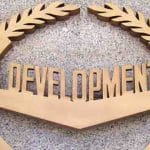Washington, Dec 10 (AFP/APP):Millions of Americans have returned to jobs lost during the pandemic, but price spikes this year have complicated the US economic recovery.
The severity of the inflation was confirmed Friday when the Labor Department reported a 6.8 percent jump in its November consumer price index (CPI), the largest annual increase in nearly 40 years.
Here is latest on the state of the world’s largest economy as it rebounds from the Covid-19 downturn:
– Millions back to work –
As of November, unemployment had declined to 4.2 percent, a stark turnaround from April 2020, when the jobless rate spiked to 14.7 percent after more than 20 million workers lost their jobs when the pandemic forced businesses to close.
The economy has added an average of 555,000 jobs a month this year, but the pace of hiring has been uneven.
While the economy remains about four million jobs short of the pre-pandemic level, there were 11 million openings last month and millions of Americans quit to find a better position or switch careers.
Many businesses complain that they cannot find enough workers to fill open positions, and some have started offering improved benefits, signing bonuses and wage increases to attract talent.
– Prices surging –
Rising wages are a part of the inflation surge that has bedeviled the recovery this year and created challenges for President Joe Biden’s policy agenda.
The causes are multifaceted. Supply chains worldwide have been hindered by the aftermath of the pandemic closures and shipping delays, which created a shortage of semiconductors that has stricken automobile assembly lines, driving up prices for used vehicles.
They also have been overwhelmed by demand, which is particularly apparent in the United States, where consumers have had their wallets juiced by government stimulus passed to aid the recovery.
The Federal Reserve’s efforts to prevent a severe downturn, including slashing interest rates to zero, also played a role.
The Fed has acknowledged the inflation threat and is expected to trim back its pandemic stimulus more quickly and raise rates as soon as the first half of next year.
Economists believe inflation will lessen throughout 2022, though it may get worse before it gets better.
– Strong growth –
The US economy experienced its most severe downturn in decades last year, but has gained back the lost ground, though at a fluctuating pace.
The economy expanded at a strong annual rate of 6.7 percent in the second quarter, but a much weaker 2.1 percent in the third quarter, dragged down by the Delta variant of Covid-19, which complicated business and scared consumers.
But with infections from that wave dropping off, economists foresee better growth in the final three months of this year.
– Biden’s complicated agenda –
Biden took office in January and not long after secured passage of the $1.9 trillion American Rescue Plan, Washington’s third pandemic stimulus package.
The White House has pointed to falling unemployment and rapid growth as evidence that the spending has paid off.
Detractors name it as a culprit in the inflation surge, saying it flooded consumers and businesses with cash which they have used to spend on goods that now are in short supply.
Biden’s Democrats control Congress by a very narrow margin, and in November, they succeeded in getting a $1.2 trillion infrastructure overhaul enacted with some Republican support, which was a priority for the president.
More elusive is Biden’s $1.8 trillion, 10-year package to improve social services and fight climate change, which Democrats characterize as a historic investment in priorities that have been neglected for years.
But Republicans, and even some Democrats, argue that with inflation running so high, now is not the time to pass such a massive bill.
The House has approved the proposal, and Democratic Senate leaders want to see it passed before Christmas, but its prospects there remain uncertain.
Follow the PNI Facebook page for the latest news and updates.








